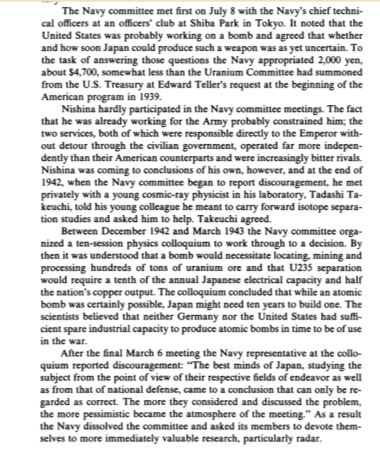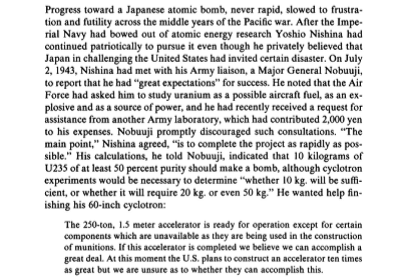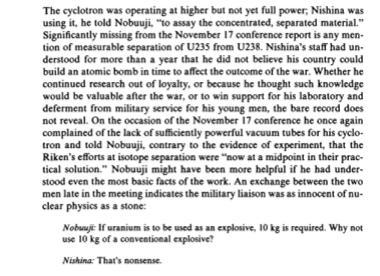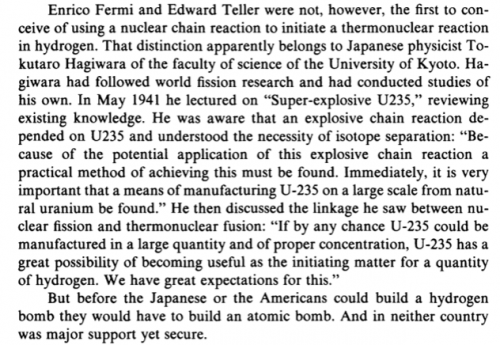- Joined
- 9 October 2009
- Messages
- 21,114
- Reaction score
- 12,181
http://ajw.asahi.com/article/behind_news/social_affairs/AJ201506290078
EDIT: Renamed to reflect that the IJN actually had two atomic weapons projects during WWII (one subsequent to the other).
Wartime documents shed light on Japan’s secret A-bomb program
June 29, 2015
THE ASAHI SHIMBUN
Long-forgotten documents on Japan's attempt to build an atomic bomb during World War II have been discovered at Kyoto University, which experts say further confirms the secret program's existence and could reveal the level of the research.
The newly found items, dating between October and November 1944, were stored at Kyoto University’s research center. Research into uranium-enrichment equipment, a key to the production of atomic weapons, was scribbled in three of the notebooks.
Japan surrendered in August 1945 before the secret project could reach fruition.
“The new data could show us the level of research they were involved in,” said Hitoshi Yoshioka, a professor who studies the history of scientific technology at Kyushu University.
It has long been known that two programs were under way in Japan to produce a nuclear weapon during the war.
One, commissioned by the Imperial Japanese Navy and code-named “F Research,” involved Bunsaku Arakatsu, a professor of physics at Kyoto Imperial University, the predecessor of Kyoto University, and other leading researchers at the institution.
The other, carried out by the Imperial Japanese Army and known as the “Nigo Research” project, was spearheaded by Yoshio Nishina, a physicist at the Riken institute in Tokyo.
Yoshioka, well versed in the development of nuclear-related technology, noted that there are few known documents on the research that took place at Kyoto Imperial University compared with that conducted at Riken.
The notebooks in question belonged to Sakae Shimizu, a researcher who worked for Arakatsu.
Akira Masaike, 80, professor emeritus on nucleus at the university, discovered the notebooks along with other documentation at the university’s former Radioisotope Research Center, to which Shimizu was once assigned.
The team at Kyoto Imperial University was trying to develop equipment to separate and enrich Uranium-235, which is found in uranium ore and is key to generating the chain reaction in nuclear fission.
The notebooks, titled “Ultracentrifugal separation,” came with tables showing equipment revolutions and numbers, and photos of relevant research papers from abroad.
Also among the find was a paper listing the material used to build uranium enrichment equipment and figures detailing the diameters and lengths of components and parts. Only a limited number of documents detailing Japan’s nuclear weapons program remain in the nation. U.S. authorities confiscated most of the research data after the war, according to Masaike.
“The significance of the recent discovery lies in the fact that the documents confirm the existence of research into the development of centrifuge separators at Kyoto Imperial University,” he said.
THE ASAHI SHIMBUN
EDIT: Renamed to reflect that the IJN actually had two atomic weapons projects during WWII (one subsequent to the other).




